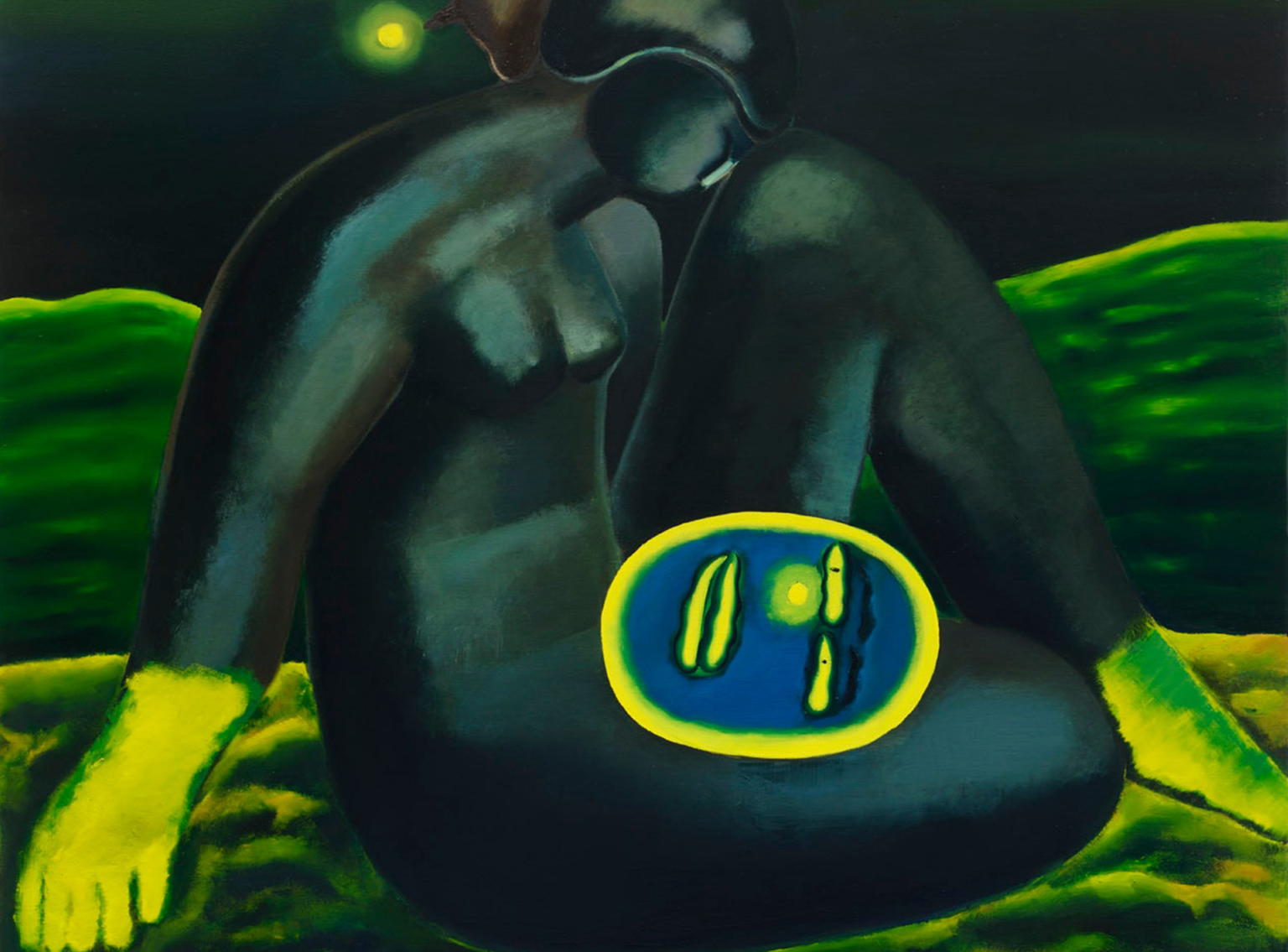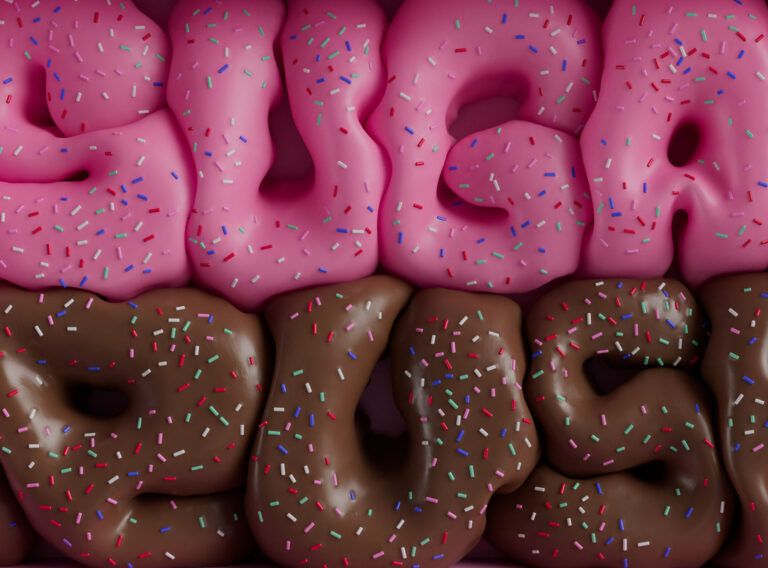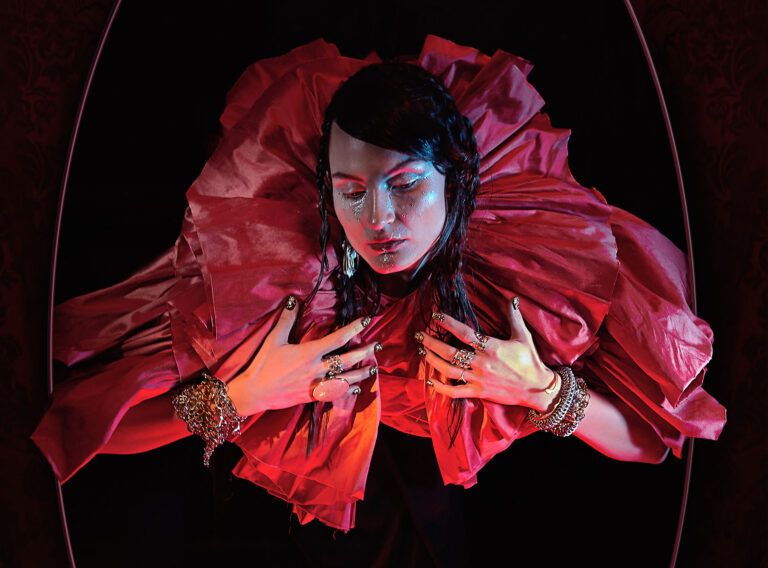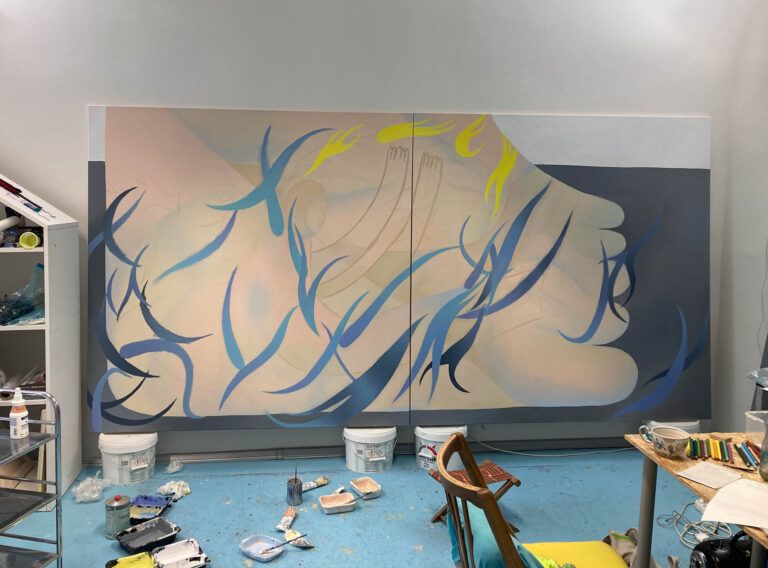The human body is the central theme of Malinová’s work. We saw it in her older paintings, where it was subjected to external pressures and stresses in ambiguous intersections of physical forms of spiritual exercises and painful dislocations. But the body is also found in her most recent paintings, such as her allegory of interpersonal relations (Spiderweb, 2018), her satire of male sexuality (Teenieweenie, 2018), and her meditation on illness (Scoliosis, 2018), or as a reflection of the billowing energetic force of human beings (Power!, 2018). Entering into Malinová’s paintings means first admitting that they relate to external pressures and inner tensions, mental strains and spiritual stresses and their physical resonance on the farthest horizons of the indivisible unity of body and mind, facts and feelings. In a certain sense, her paintings are post-factual because they relate to the world without any objectivizing perspectives; in a way, they are non-methodological, wafting in a storm of emotions and inconstant symbols, imaginatively flirting with magic and the excitement of removing the hyphen between “inner” and “outer.”
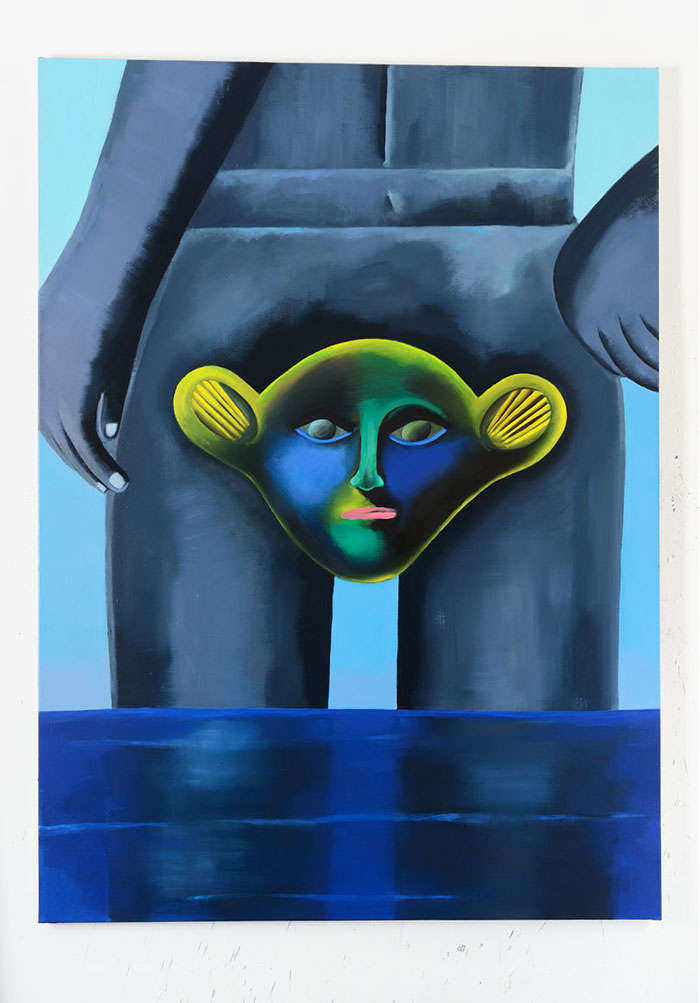
Her paintings depict the human personality as the focal point of a powerful flow of information that cannot be reasonably directed but that nevertheless must somehow be dealt with. Pavla Malinová’s paintings possess a sense of urgency; they are like a safety valve for releasing excess pressure, but during this process they also “condense” (the way steam condenses into water) into symbolic “relationshapes” that are exciting precisely because they are not created as representations of standardized systems but as bold and honest proposals for how to comprehend the confusing situation of de-hierarchized space-time to which we are subjected. They are an expression of a paradigm shift that we not just feel is necessary but that is clearly already happening – and the only way we have of describing its topology is through poetry.
The following curatorial text written by Pavel Kubesa for NoD Gallery in Prague goes with Pavla Malinová’s recent exhibition called “A face with a slight shudder of anguish”. /
The famous painting The Raft of the Medusa (1818-1819) by the French painter Théodor Géricault signified a certain shift in the history of painting. In his best-known work, Géricault turns the emphasis away from great historical, religious or mythological figures that had dominated the artistic canon of previous millennia, representing a group of anonymous, sick people instead. The cult of ancient or biblical heroism is replaced with an empathy for the unknown and terror, which were felt by the people of the early romantic era as they were just entering this new world. The Raft of the Medusa illustrates the end of hope, pointless suffering and horror, which hide in the primal human survival instincts that ultimately override even moral obligations and humanistic visions, throwing civilized man into the throes of barbarianism.
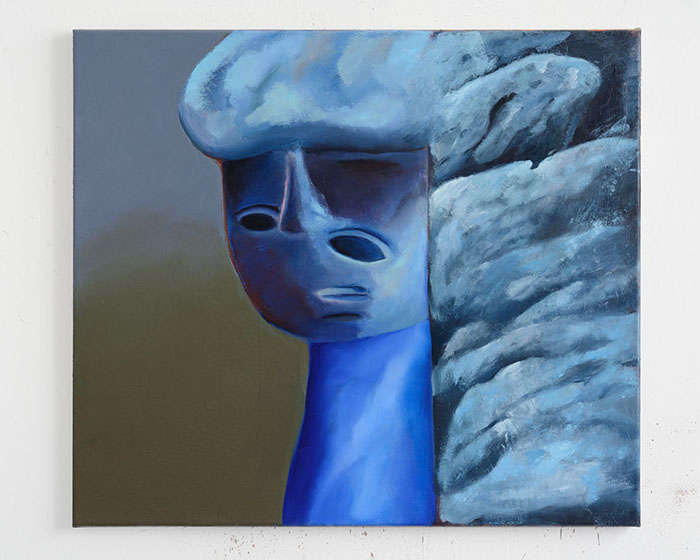
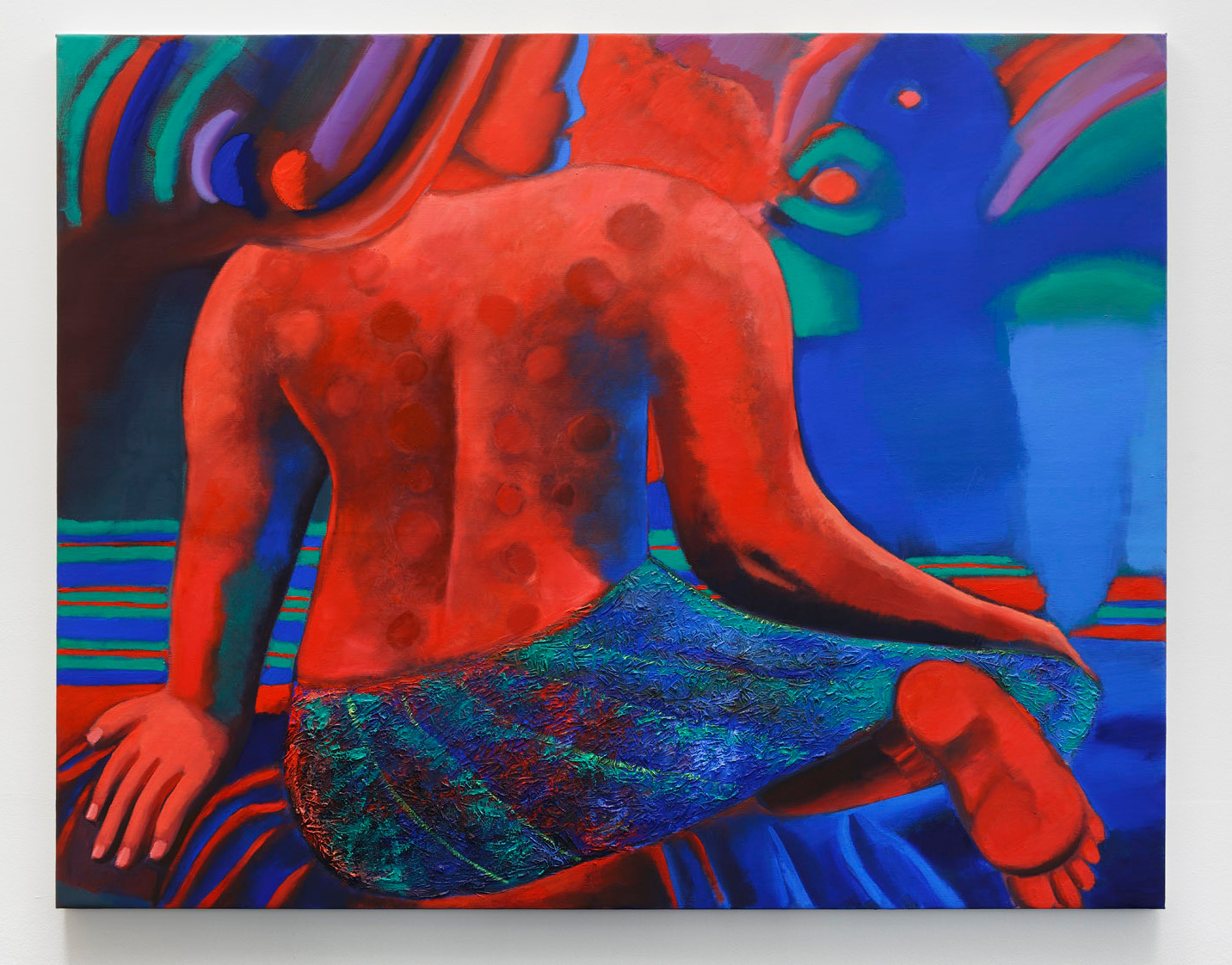
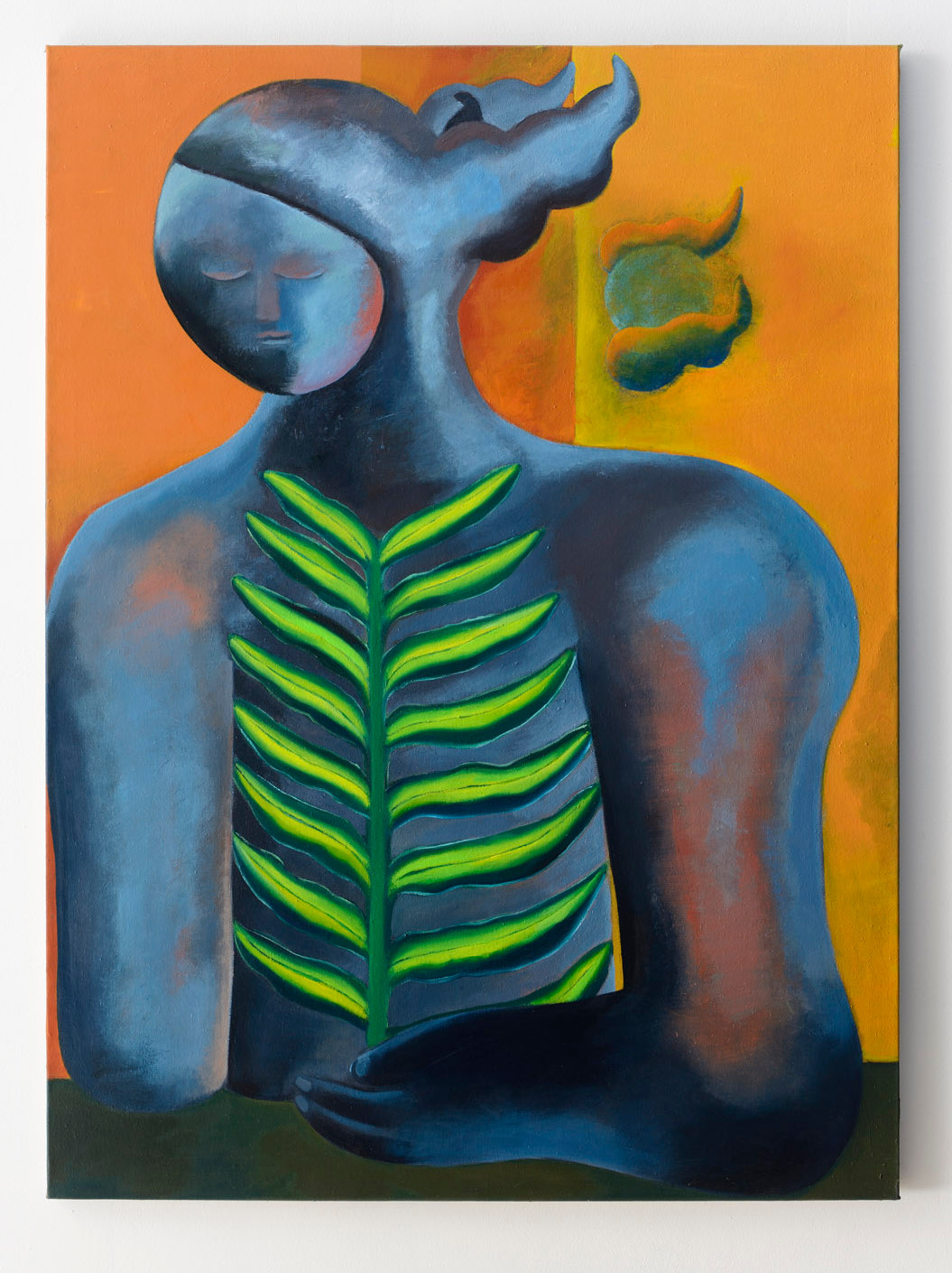
In the second half of the 20th century, the German artistic scene’s “enfant terrible” Martin Kippenberger, aware of his approaching death, created a series of photographic self-portraits as one of his final works under the same name. In these images he “re-enacts” the poses of the individual survivors from Géricault’s famous painting. Kippenberger’s allusion to The Raft of the Medusa turns the aforementioned interpretative perspective of a romantic work towards an inward intimacy of the body. As such, Kippenberger in Géricault’s poses does not represent an anonymous person as the ideal of an agitated humanity, but himself as a human being with a unique emotional landscape and perceivable corporeality.
We may notice at least two levels of meaning from which the question of posture as a key formal and thematic issue of figurative representation (in painting and sculpture) can be approached. On the one hand, the bodily pose may take on the function of a certain archetypal symbol, and work in the image as an allegory. On the other hand however, it can also serve as a means of introspection, as a representation of experienced corporeal or emotional states. As such, Géricault’s characters are found representing concepts such as damnation, terror or hopelessness, whereas Kippenberger’s self-portraits represent the unspeakable, and thus certain bodily and mental contents that can only be communicated as “known”, but remaining indescribable.
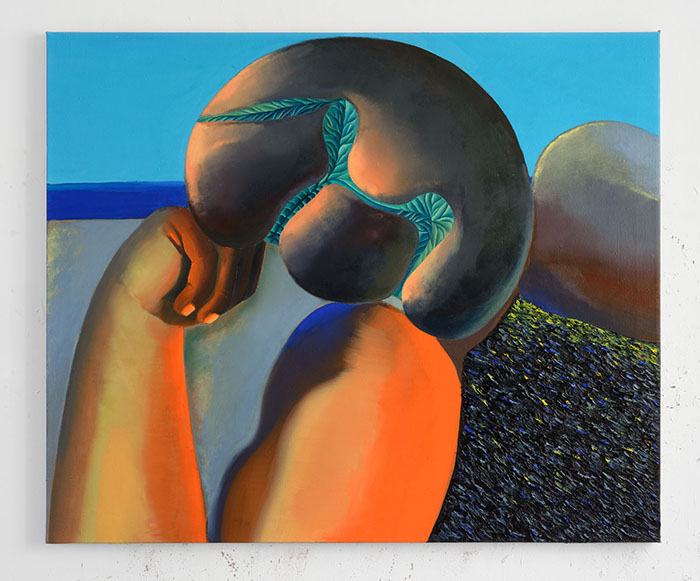
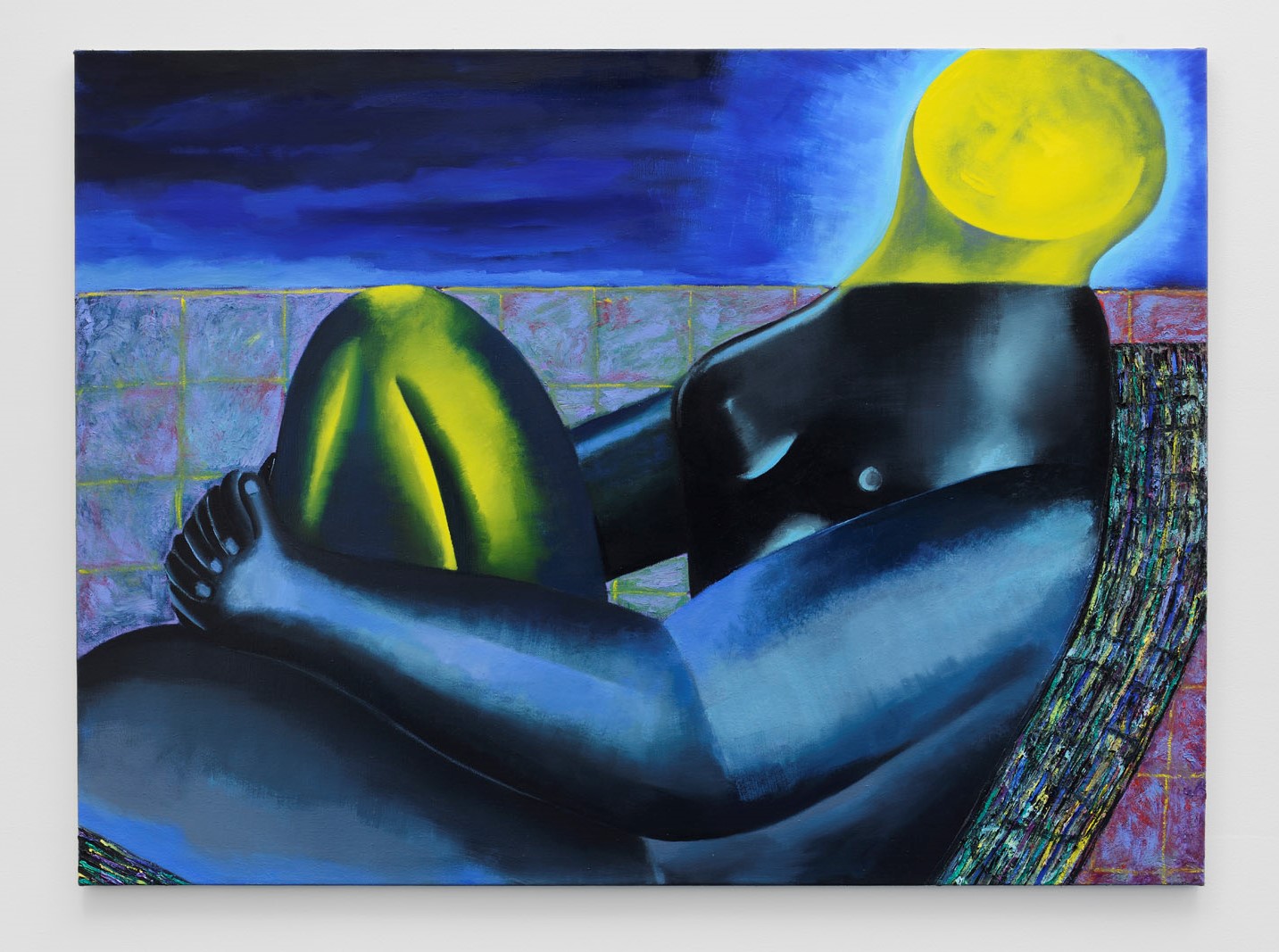

It is the pose of the body which plays a major role in Pavla Malinová’s paintings. She combines both the defined levels of meaning (a character as a representative of a civilization and as a body that is a scene of intimate experience), and also in a certain way, implicitly, further develops Kippenberger’s autobiographical / autotherapeutic function. The individual poses of the represented figures are often reminiscent of relaxing or exercise poses and stem from the author’s perception and dealing with her own, sometimes awful corporeality. The physicality itself, the literal presence of matter in her paintings is achieved by almost a sculpting process of delineating the human body: it is seen as volume and space for the uncovering of lights and shadows. The characters’ individual somatotypes often draw from a wide variety of inspirations: from objects and sculptures of ancient Egypt all the way to modernist artworks. Her figuration in painting thus bears not only primitivistic features as in the works of Fernand Léger, but the bodily constitutions may seem reminiscent of semi-abstract figural monuments of Henry Moore.
The second key motif of Pavla Malinová’s current series of paintings is the face. Faces often inspired by works from the history of art emerge here in the role of the revealed and obscure, revealing and obscuring. Her faces unearth the figures’ emotionality but also enshroud any concrete identity or even sexuality, coming in the form of androgynous beings. One of the most interesting images are faces obscured by various objects that resemble cosmic events and objects: faces the shape of the Moon, a corona of a star, or a face with a star mirrored in its own lap. This self-reflecting, intimate principle of her paintings is thus contained within a wider futurological perspective: her figures, hovering in utopian atmospheres, are seen as posthuman beings inhabiting an extraplanetary cosmological future.
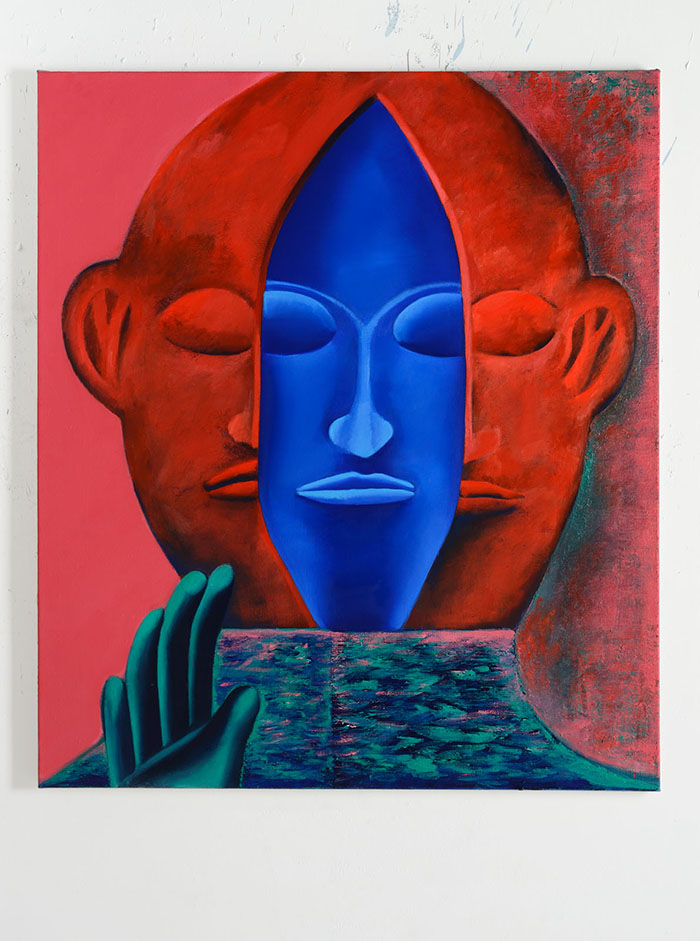
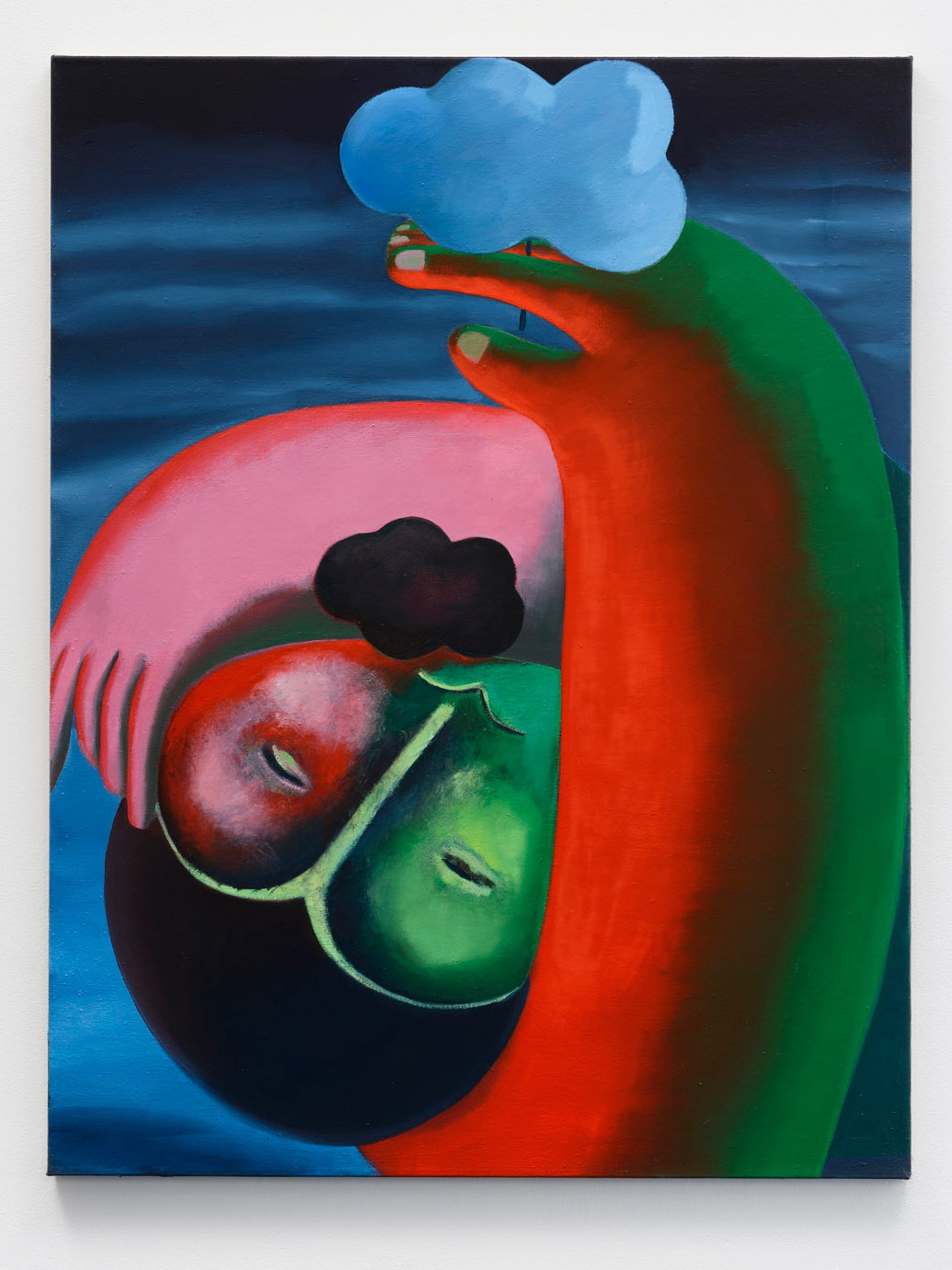
Pavla Malinova’s paintings thus perhaps point to the vertigo that looms ahead, that realization of human civilization within the cycles of the universe, but also to that daily and perhaps imperceptible vertigo taking place inside each person when faced with the impossibility of communicating the innermost feelings and experiences that hide behind our faces. If we manage to recognize a throb of genuine emotion in somebody’s expression, let us not be apathetic towards it.
“Apathy, or any of its other names, is a terrible and permanent form of cruelty.”
– Marcel Proust
“The serial number of a human specimen is the face, that random and unrepeatable configuration of features. It doesn’t show one’s nature, soul or what we call “I”. The face is only the specimen’s number.”
– Milan Kundera, Immortality
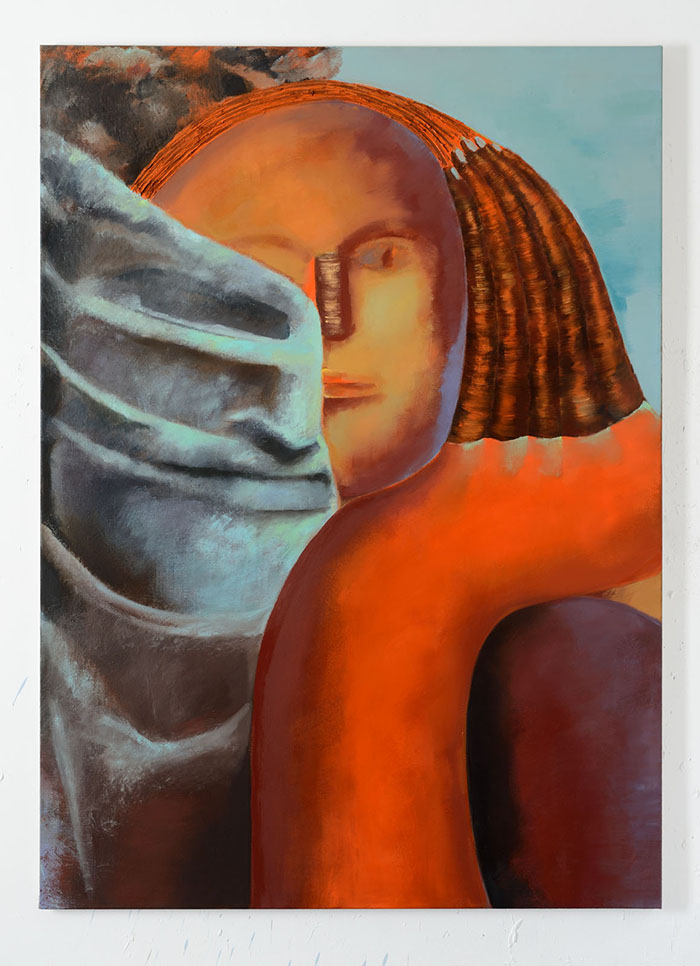
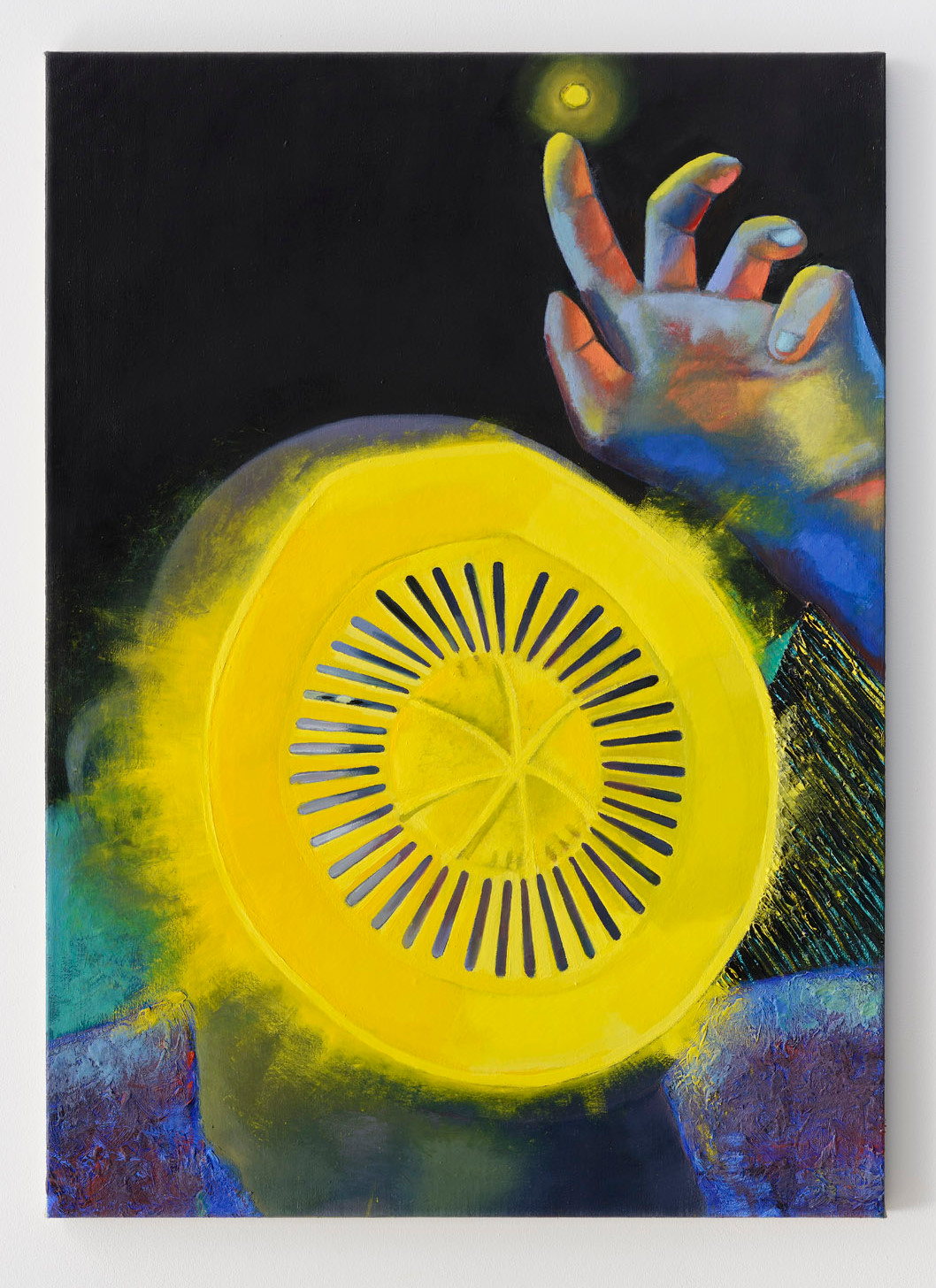
BIO/ Pavla Malinová (*1985) graduated from Ostrava University’s Faculty of Arts’ painting studio. She is a figural painter and the robust characters in her works play complex games. Malinová works with both contemporary and archetypal symbolisms, the masculine and feminine principles, and her personal romanticism in the post-truth era. Her paintings often transgress two-dimensionality and enter space, becoming object compositions, or come into being in a site-specific spirit directly on the walls of the gallery. Her allusions to modernist forms go hand in hand with a rawness not unlike art brut. Malinová has exhibited her works in a variety of independent galleries and artistic institutions all across the Czech Republic, but also in Berlin, Brussels or Krakow.
PAINTINGS TITLES BY ORDER IN THE ARTICLE / Chapiteau Hathorique, The Blindness, Shiatzu, The Secret Life of Plants, Live, Go to Sleep, Embrace II., Head of Life, Insomnia, The Bust, The Moon Sun
CREDITS
Artworks / Pavla Malinová @pavla_malinova
.
Curatorial text for NoD Gallery / Pavel Kubesa
Text from catalogue / Jiří Ptáček
Photo / Ondřej Polák
Translation / Tomáš Kovařík
